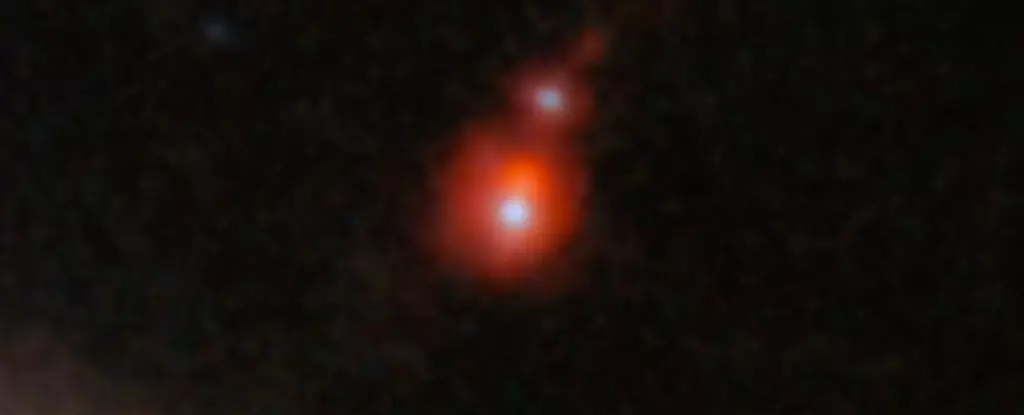In a groundbreaking discovery, astronomers using the James Webb Space Telescope (JWST) have detected the most distant black hole merger ever observed, spanning a distance of 13 billion light-years. This monumental finding sheds light on two supermassive black holes and their accompanying galaxies, merging just 740 million years after the Big Bang. The revelation of this colossal cosmic collision opens up a world of possibilities in understanding the origins and growth of these enigmatic entities.
Supermassive black holes, ranging from millions to billions of times the mass of the Sun, have long posed a perplexing puzzle for astronomers. While smaller black holes can be traced back to the supernova explosions of massive stars, the genesis of supermassive black holes remains a mystery. The traditional model suggests that these behemoths grow through a series of hierarchical collisions involving larger and larger black holes, a process that would typically take a significant amount of time. However, the appearance of massive black holes in the early Universe challenges this explanation.
The James Webb Space Telescope, with its advanced infrared capabilities, offers a unique opportunity to peer into the Cosmic Dawn, the period following the Big Bang. During a survey, the telescope identified a pair of galaxies named ZS7 on a collision course, each harboring a supermassive black hole at its center. The active growth of these black holes manifests as intense radiation illuminating the surrounding gas and dust, providing crucial insights into their formation and evolution.
The discovery of a massive black hole merger at such an early cosmic epoch highlights the importance of these cataclysmic events in shaping the Universe. By examining systems like ZS7, astronomers can gain a better understanding of the role mergers play in the growth of galaxies. In addition, the detection of gravitational waves produced by these colossal mergers offers a unique opportunity to study the fundamental properties of the Universe.
Through their observations, the research team was able to determine the approximate mass of one of the black holes involved in the merger, estimated to be around 50 million times the mass of the Sun. While the dense environment around the second black hole posed challenges for measurement, its mass is believed to be similar to its counterpart. This unprecedented glimpse into the early stages of black hole mergers provides valuable insights into the mechanisms driving the growth of these cosmic giants.
The groundbreaking discovery of a distant black hole merger not only expands our knowledge of the Universe’s evolution but also raises intriguing questions about the origins of supermassive black holes. As astronomers continue to unravel the mysteries of the cosmos, each new revelation brings us closer to understanding the enigmatic forces that have shaped the vast expanse of space and time.


Leave a Reply